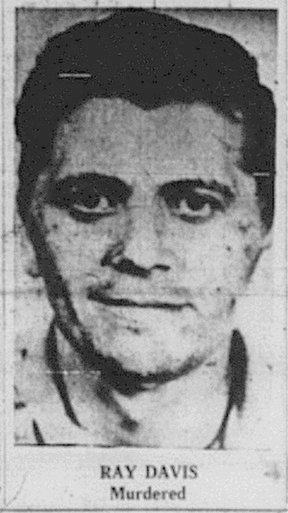|
In the late 1960s a serial killer quickly and clumsily ____________________________________________________________ |
|
|
|
All investigations of serial killers probe back in time to see if the signature of the perpetrator can be seen in earlier crimes. A serial makes their biggest mistakes early-on, as they are developing their M.O. Uncovering an earlier and unlinked murder can help reveal the identity of the serial killer under current investigation. For the “Boastful Slayer,” it is particularly unavoidable to look into the past. The Zodiac claimed earlier victims, and in his taunting manner even challenged Law Enforcement to try and uncover them. Although he was a proven liar on many points, there may be truth to some of his boasts about earlier victims, particularly in southern California. There are a few clues that urge us on. First, the murders of David Faraday and Betty Lou Jensen (December 20, 1968), the first canonical victims of the Zodiac, were carried off with precision. For example, after dispatching Faraday with one bullet to the head, Zodiac held his composure and put 5 .22 caliber slugs in Jensen’s back in “remarkable close grouping” while she ran away. There is a tragic series of murders, also by .22 caliber, in southern California with disturbing echoes of the Zodiac’s Bay Area crimes. Or, I should say, Zodiac’s crime series of 1968-1969 is a somewhat disturbing echo of this series of earlier murders between 1962 and 1964. Eerily, the known Zodiac Bay Area crimes are almost an inversion of this series of early 1960s murders. This crime spree began with the murder of a lone cab driver and then continued with the murder of cooing couples along the So. Cal. coast. The Ocean Beach murders will be dealt with at Zodiac and San Diego. The Gaviota Murders are Gaviota Revisited and Gaviota Crime Scene Investigated. Here let’s look at the murder of the lone cab driver. The victim is 29 year old cabbie Ray Davis. It is the night of April 11, 1962. The time is 11:10 p.m. Davis reported to his dispatcher. Presently he was at the intersection of Mission and Hill Streets. He stated he was taking a fare to the beach front area. He never reported in again. At 1:45 a.m., April 12, officer Terry Stephens found Davis’ body dumped in the alley between two upscale streets. His body was, in fact, found behind the houses of the former mayor of Oceanside, Joe MacDonald (1926 South Pacific Street) and current mayor Erwin Sklar (some reports state the current mayor lived “across the street.”). The killer seemed to be making a statement, a statement that was intended to upset the powers-that-be. The killing itself was quite utilitarian. The murderer had sat in the back seat and shot Davis in the back and in the back left side of the head with a .22 caliber pistol. He removed the body from the cab and drove off. The cab was dumped in the 400 block of South Pacific, about 15 blocks from the body dump location. A book was on the front seat: Dance with the Dead, and there was a bullet hole through the windshield of the cab. The subsequent investigation and forensic examination of the body provides us with enough information via which to deduce some actions and induce a chain of events. One, the bullet in the victim’s back was to the right side of the T-4 vertebrae. It left a bruise to the left of the sternum at the second rib, yet without exiting the body = the killer was right handed. He shot Davis with the gun barrel just above the back seat. Two, the .22 caliber was an automatic. One does not misfire a manual weapon. The bullet hole in the windshield was high up. It would have to be the second shot fired. Immediately after the first shot, Ray Davis’ body slumped forward onto the steering wheel. The killer jolted from the kick of the gun and having an automatic fired a second shot which went through the upper part of the windshield. Three, the bullet hole in the left side of the head by the ear. It is highly unlikely that the killer leaned forward, shifted his gun to his left hand and gave the coup de grace in the head from the back seat. Thus, the circumstances Induce: The killer got out, opened the front door and shot the head of the victim while standing over him. He then pulled the body from the cab and dumped it in the alley and drove off. (Or he pulled the body out and shot it on the ground.) No neighbors reported hearing gunshots = should a silencer be considered? (The victim’s head could have been on its right side on the steering wheel and the killer shot his head inside the cab, but the cab photos don’t show the blood splatter expected from that.) The killer drove the car for a couple of miles. I would imagine he had blood on him. It would therefore seem unlikely he took public transportation thereafter as a means of escape. (It was noted at the time that the car was parked some blocks from a bus stop.) The daring act of dumping Davis’ body behind a former mayor’s house reminded Oceanside Police that a crank had called them on the night of April 9, two nights ago. This crank had said over the phone: “I am going to pull something here in Oceanside and you will never be able to figure it out . . .”€ť or words to such an effect. Obviously, the murder of Ray Davis fit. He was killed for no other (apparent) reason than being a target, a target the killer could easily get to any place in town. He hadn’t been robbed. He hadn’t been beaten. He had been killed and unceremoniously disposed of where it would shock the town the most— and get the most publicity. Everything fit with the attitude of the “crank” caller’s warning of two nights before. That the caller and the murderer were one and the same was underscored a week later when he called the police again and declared: “Do you remember me calling you last week and telling you that I was going to pull a real baffling crime? I killed the cab driver and I am going to get me a bus driver next.” The city went into an alert. Bus routes were watched. Two drivers were assigned to each bus. Guards were at the terminals. Marines were even called in from Camp Pendleton. It was written up far and wide in the southern California newspapers. Chief of Police William Wingard believed they were dealing with a deranged killer. The case took a few turns. A 20 year old marine, Riley Coates, was arrested as the prime suspect. He had been robbing cabbies in his hometown of Compton and in Oceanside. Several felony charges were brought against him, but the charge of murder was dropped when his fingerprints didn’t match any of the latents taken in the cab. On the face of it, the phone calls and the details of how the murder must have taken place underscore Ray Davis was murdered for the motive given by the phone caller: to pull off a baffling crime and shake up the establishment. The car was dumped where he could easily make his escape. He may have been a local. He may not have been. By saying “I’m going to pull something in Oceanside” he implied he was not a local. But then he seems to have known where the former mayor’s house was. The case, of course, remains unsolved. The similarity to the Zodiac Killer’s motive in northern California is obvious. The difference, of course, is that this Oceanside cab killer wasn’t writing letters developing an alter ego with occult motives and a catchy comic strip handle like “Zodiac.” If we ignore the Zodiac’s letters, the motive for murder remains the same: killing was merely an ante in a game of death and community terror. On its own, the Ray Davis murder doesn’t forge a link to Zodiac’s Bay Area crimes of the late 1960s. However, it doesn’t stand on its own per se. Come forward over a year. On June 4, 1963, at Gaviota Beach near Lompoc, north of Los Angeles, a couple would be brutally gunned down by a man using a .22 caliber automatic pistol. In February 1964, Johnny Ray and Joyce Swindle would be murdered in a very utilitarian way while they cooed along Ocean Beach in San Diego. They were also murdered with a .22 automatic pistol. It too sent the Ocean Beach area into a panic fearing the “Sniper Slayer.” Extra patrolmen were assigned, and a chopper patrolled overhead. Lompoc sheriffs came down to see if there could be a connection to their Gaviota crime scene, but nothing was publicly made of any connection, except a .22 caliber had been used in both crimes. Remaining officially unconnected to each other let alone to the Zodiac Murders, the pattern above nonetheless is an inversion of the Zodiac Bay Area crimes. The Bay Area killer attacked 3 sets of cooing couples. Then he killed a lone cab driver to send San Francisco into a panic while his alter ego The Zodiac lorded over the metropolis through his published letters to the newspapers. The southern California killer murdered a lone cab drive as a means to publicity and community panic. Then there are 2 sets of cooing couples gunned down with a .22. Three sets of cooing couples . . . perhaps. The double murder of David Faraday and Betty Lou Jensen on December 20, 1968, can almost be viewed as straddling the demarcation between the sets of crimes. They too are killed with a .22. Their killer did not take credit for the murders until over 6 months later. Before us in print the killer slowly develops his alter ego “Zodiac.” He now uses a 9 mm pistol. Points to consider. At the very least, points to consider. In the case of David Faraday and Betty Lou Jensen we know the .22 caliber pistol was most likely a J.C. Higgins Model 80. It was such a common weapon with common lands and grooves in a right turn that the actual model could not be identified, the ballistics expert said, even if he was holding it in his hands. Perfect weapon for a utilitarian killer. The progression seen in the couple murders of California in the 1960s suggests a single perpetrator. Thrill of murder was the ultimate goal. If what I call The Coastal Killer and Zodiac are one and the same serial killer, the gaudy and highly overproduced counterculture (beginning with the Summer of Love 1967), may have inspired him to develop a cultic alter ego like Zodiac to jack-up the fear value of his crime spree. He nevertheless remained a cowardly lovers’ lane killer. He may have been trying to rekindle the thrill he had unintentionally achieved with his last pair of victims in San Diego. For me, generalities in the combined crime sprees are damning. The series of crimes can easily be fitted together. Specifics, however, are another matter. The Ray Davis case, for instance, is connected to Zodiac’s crimes only by the broadest of generalities. Unfortunately cab killings and erratic phone callers weren’t a rare thing in the post Modern 1960s. There is another curious specific: why did Zodiac switch caliber after the Faraday/Jensen murders? If he was a beginner, he realized .22 caliber wasn’t enough power. If he was the Coastal Killer, it’s a bit late in the crime spree to switch. There are other specifics of inconsistency. Another example: the Gaviota murder location was a popular petting spot for couples, but it is unlikely a murder there would have created community terror, since it was very much a rural area. So this doesn’t fit with the express motive of the Oceanside killer to baffle and terrorize. The Ocean Beach murders of the Swindles, however, the third in this set of coastal murders, very much fit the Oceanside killer’s motives. But, contrariwise again, the murders of Faraday and Jensen do not. And they did not at the time. They did so only after Zodiac took credit and established himself through more murders and newspaper bragging. What did establish Zodiac as the No. 1 menace of the Bay Area was a cab killing in town and then the threat of a bus killing. Along with the corpus of his nasty letters and previous crimes, it worked. Finally he was the comic strip villain looming diabolically over Gotham. This is a pretty long and inconsistent evolution from 1962 to 1969. But then Zodiac’s crime spree in and of itself is quite inconsistent as well.
|
|
Q Files is not spontaneous extemporanea. |
||||||||||||||||||||||||||||||
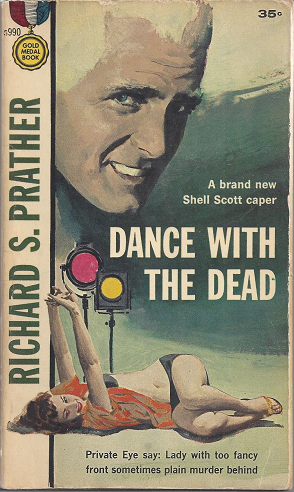 |
||||||||||||||||||||||||||||||
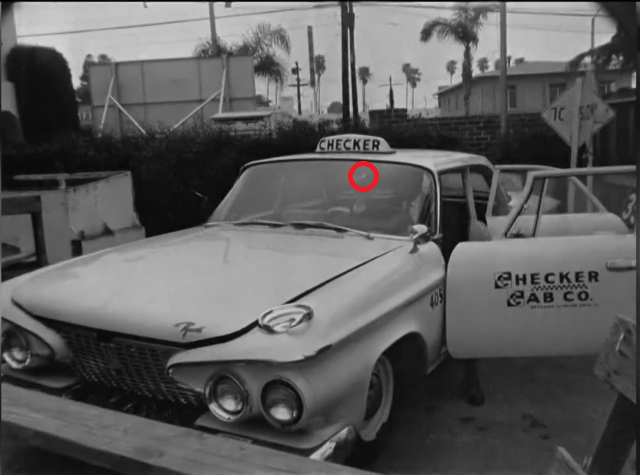 |
||||||||||||||||||||||||||||||
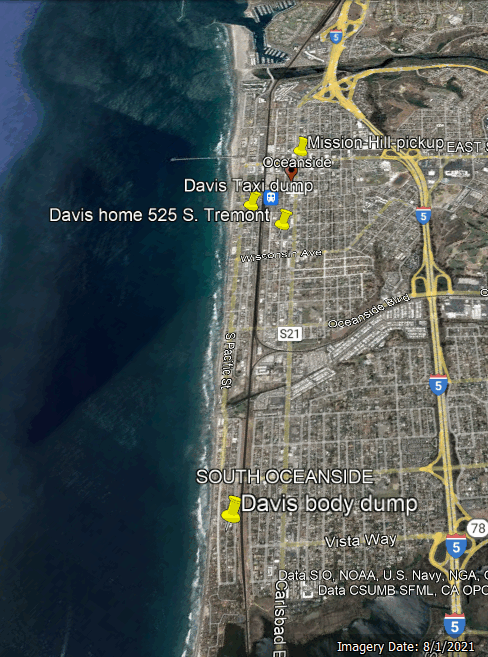 |
||||||||||||||||||||||||||||||
|
An interesting pattern. The killer no doubt parked the taxi at a location where he could escape. It is to be noted above that the taxi was dumped at a location equidistant from the pick up location, meaning the killer could have had a car parked somewhere between Mission and Hill and the taxi dump location. It is curious to note that Zodiac must have done the same thing in San Francisco for the murder of Paul Stine in 1969. He would have parked somewhere in Presidio Heights, walked to the Geary and Mason pick up point downtown and then ridden with Stine back to Presideo Heights. |
||||||||||||||||||||||||||||||
|
“We wondered about the author’s name, Quasar, which in normal parlance means any of a class of celestial objects that resemble stars but whose large red shift and apparent brightness imply extreme distance and huge energy output, and if it might relate to the book and we weren’t disappointed.” —New Yachting Magazine. |
||||||||||||||||||||||||||||||
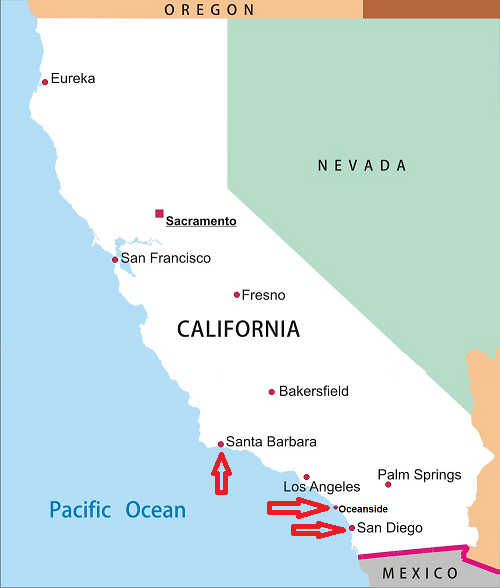 |
||||||||||||||||||||||||||||||
|
The strike locations of what I call The Coastal Killer. Zodiac was also essentially a coastal killer except for the Lake Berryessa murder. |
||||||||||||||||||||||||||||||
|
“During a recent trip to New Mexico, I finally tackled Quasar's book and found it to be the best book I've ever read on this important subject. Quasar is a serious-minded researcher who, rather than sensationalizing or speculating in an irresponsible manner, reports the cold, hard facts. — Andrew Griffin, the Town Talk, New Orleans. “He’s bloody eccentric, an historian with no qualifications who sticks his nose into affairs and gets results.” — an unnamed and undisclosed British TV producer.
|
||||||||||||||||||||||||||||||

